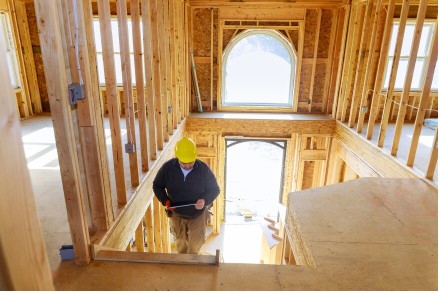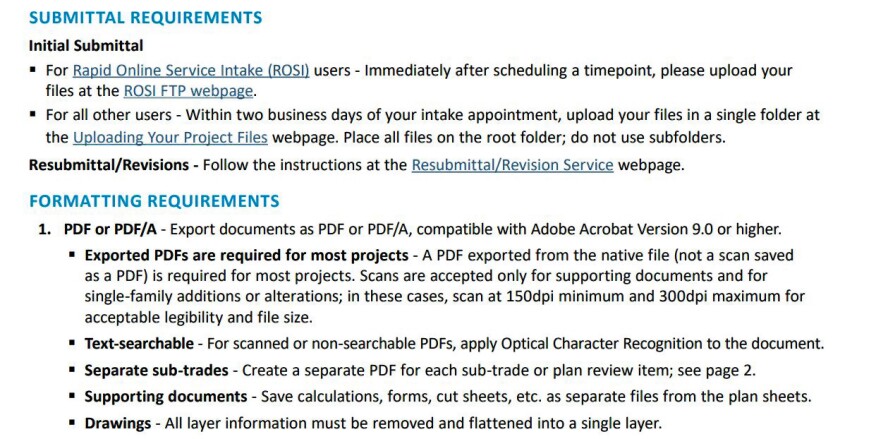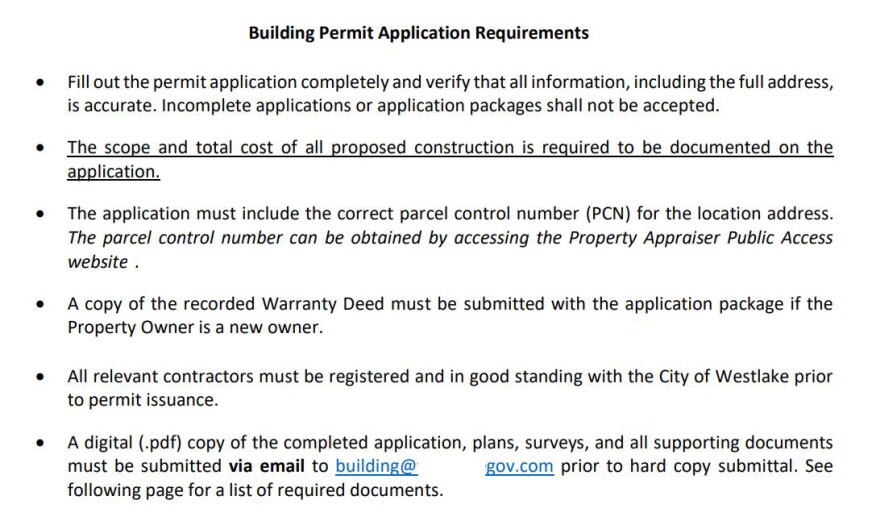Majority Find Post-Pandemic Building Inspections a Struggle
Originally Published by: JLC Online - September 15, 2022
SBCA appreciates your input; please email us if you have any comments or corrections to this article.

The results of a survey we sent out through the JLC newsletter give a mixed report of the performance of municipal, county, and state building code agencies. The survey is neither a comprehensive nor a quantitative assessment. Rather, it provides a broad look at how building professionals feel about the building code process and examines any changes to it due to the pandemic. Among the 130 respondents, 16 code officials weighed in to give a self-rating and provide a contrasting point of view.
Building Department Ratings
To get an impression of how builders felt about their experiences with the building departments they worked with, we asked respondents to rate their experience on a scale of 1 to 5, with 1 being “poor” and 5 “excellent.” The results shown (see chart below) reflect the responses from building professionals, but exclude those from building officials (which were all 5s, except a couple of 4s from officials who recognized there is room for improvement—but nothing lower).

On a scale of 1 to 5 (1 being poor and 5 excellent), respondents rated their overall experience with the building departments they work with. The results shown in the bar graph above are those of building professionals only, with the responses from code officials left off.
For almost 40% (those building professionals who provided ratings of 4 and 5), the experience has been mostly positive. Explanations of each rating choice included words like “cooperation,” “ally,” “team,” and “respect.” These are some examples:
“They are available for same day inspections, and answer our calls even after hours.” [5]
“I typically only work in my hometown and I have a good relationship with the building department as a whole. I treat the inspectors with respect and [in turn] they do the same for me.” [5]
“For the most part we have good relationships with the building departments we work with. The struggle is when they don’t get what they want from the project engineers or architects.” [4]
“The building commissioner (with whom I’ve had other good interactions in other towns where he also serves) was helpful with questions, responsive to requests for inspections, and generally acted as an ally in getting the project done to code specs.” [5]
The most common rating, 3, could be interpreted as “OK,” but the explanations for the rating often express something more nuanced. Many selected 3 because of a mixed experience: Either the respondent described working in different jurisdictions or expressed varied experiences with different officials within the same jurisdiction. A number of building professionals who selected 3 also included constructive critiques. For example, several suggested that inspectors were capricious, enforcing their interpretation of the code because they had the prerogative to do so, even on details that passed muster with plan reviewers and often were felt to have little significance to the safety or performance of the building.
Other examples of responses associated with a 3 rating included:
“They keep moving the goal posts. What would fly a month ago won’t last week.”
“The employees in the field worked very hard and after the initial shock of the shut down (or lack of one for them) they were fantastic under the situation. I would give them a 5. The staff downtown have been a complete cluster $&@!. City hall shut down completely, then went to ‘by appointment only.’ What a joke.”
“In the end, an inspector has no financial or legal responsibility to anyone involved in the project, while the contractors, architects and engineers have their licenses, livelihood, and reputation at stake every time.”
Pandemic Effects
What initially prompted our survey were rumblings we had heard from readers that, of all the challenges facing building professionals today—more than labor shortages, high material prices, and extended lead times—complying with local regulations was the problem they now found the hardest to solve. In our survey, this problem manifested in responses as long delays, higher fees, and difficulty communicating with building departments (largely owing to staff shortages and reduced access to officials).
Even though the pandemic has changed how almost every jurisdiction conducts business, not all are experiencing lingering effects. For about a quarter, things are simply “back to normal.”
When asked “Did the processes for pulling a permit, conducting a plan review, or having a project inspected change during the coronavirus pandemic?,” about a third reported positive changes resulting from moving more of the process online. These are some responses in this cohort:
“Transitioned to online inspection requests saving much time for our staff.”
“Most departments have done a decent job keeping their processes working or improved. I would say they are on par with managing pandemic-related issues as good as any other business.”
But for the majority, the responses to the “what changed” question, were dubious or negative. For example:
“Less face to face, more ‘leave application in the box.’”
“Changed significantly. The time period has changed from the legal 30 days to 60+ days to get a permit. To boot, some building departments have added fees to expedite the process. This is on top of the $15 to $22 per $1,000 building fee. So [the cost of the permit on] my job at $1,450,000 is $21,750.”
“You call the county code hot line [but you’re] lucky if you even get a call back. The phone number online is no longer working and has been changed.”
For some jurisdictions, there has clearly been a learning curve. As jurisdictions adapted to policies initiated during the pandemic, practices that were at first shaky have improved and even resulted in efficiencies baked into a new way of conducting business. As one respondent explained: “Initially after the first lockdown, everything was a mess. A lot of things were moved online eventually and the processes were made better. The building department has become much more responsive to email communication and that continues to this day. It used to be that I would never communicate with the building staff in any way but in person. But now I trust that they will respond to my email and they consistently do.”
Comments went beyond reflections on bringing communications with building departments into the 21st century. Almost 70% of responses to the question about what changed during the pandemic mentioned a significant digital transformation to the code enforcement process, affecting applications for building permits, plan review, and building inspections, in particular.

While a digital permit application process is seen by many as an improvement that’s supposed to save driving, wait times, and parking hassles to visit the building department, there is a steep learning curve for others, and the new processes don’t always save time. Builders say the document submission requirements can be overly complex and claim some building departments are hiring staff with more computer skills than building knowledge. While changes have not been implemented in all jurisdictions, many are saying goodbye to submitting applications in person and conducting over-the-counter plan reviews. For better or worse, many jurisdictions have switched over to a digital permit application and plan review process. An example of the requirements for each are here.
While changes have not been implemented in all jurisdictions, many are saying goodbye to submitting applications in person and conducting over-the-counter plan reviews. For better or worse, many jurisdictions have switched over to a digital permit application and plan review process. An example of the requirements for each are here.
Permit applications that must now be submitted online were mentioned most often when specific process changes were described. These are some examples:
“A little more online presence and no physical applications accepted. With a little learning curve I believe the changes are faster and permanent.”
“We couldn’t go into the building at first, just leave and pick up paperwork in drop box outside. Then after 5–6 months they let us go into lobby for same. Now we do all the permitting with PDFs online. They still do drop offs, but it’s much easier to do online.”
“Most all applications and reviews are handled in an electronic format (no more walk-in paper applications w/ over the counter reviews).”
“Permits are significantly harder to pull, demand more requirements with online submissions only and time delays are outrageous.”

Bart Sadowski
The digital transformation of the plan review process is surfacing wide-spread frustration over the the disparate ways building departments receive large graphic files and the lack of in-person contact with reviewers.
Plan review seemed to garner the most negative reviews when specific process changes were described. The biggest complaints concerned overly complex file naming and formatting procedures. Several mentioned jurisdictions not being able to accommodate Apple platforms. But added office time was the most cited issue:
“Plan submission in digital format was required. Like me, reviewing digital plans takes the departments longer than paper plans.”
“No interaction with plan checkers, so they could request items that the code allowed to be changed without recourse.”
“Most of the plan checkers are new hires that [know] little about building. It’s frustrating to have to jump through a lot of hoops and have some kid push back something, delay the process, and take time before you can point out that they are misapplying the code.”
Less onerous than delays, but adding unexpected complexity to the job, at least one instance of this digital transformation has led to a new level of transparency and new challenges in client management: “Electronic submittals, rather than in-person submittals, might be institutionalized. We’ve had a couple of Zoom conferences with plan checkers that the client heard about and wanted to be included on. We never had clients asking to come along to over-the-counter plan checks.”
Inspections. Changes to the inspection process during the pandemic garnered the most favorable feedback from building professionals. Remarkably, this phase of the code enforcement process was cited most often as the one returning to an in-person process, though not in every case.
“Most inspections were conducted remotely, using photographs and videos submitted by contractor.”
“Photo inspection was more widely accepted and seems to be staying that way.”
“Everything became electronic—pulling permits, scheduling inspections, inspectors did not go into projects so we would take photos, all paperwork was electronic. The City put a lot of money into the new system so electronic means continues. Saves time actually.”

Protocols for conducting “remote virtual inspections” had been defined by the International Code Council prior to the pandemic. This helped jurisdictions respond quickly at the height of the pandemic to keep officials and workers safe.
The rapid operational shift by some building departments owes enormous credit to the International Code Council, which was quick to pull together and distribute protocols for “remote virtual inspection” that the organization had been working on for some time before the pandemic. (These protocols are available from the ICC in “Recommended Practices for Remote Virtual Inspections” as a free download at iccsafe.org; see excerpt, above.)
Timeline. Digital changes have not necessarily made the process quicker. Among responses that mentioned the timeline of the code process, more said that it has become longer than celebrated the process being shorter. These examples give some idea of the range:
“Inspections could take up to 10 days to be conducted and pushed back on the day of the inspection.”
“Extended time a lot. Over the counter permits now take 2–3 weeks.”
“Time of permitting 60 to 90 days and inspections some times 10-days out and things fail for no code violations [but] things the inspector [didn’t] like.”
“Longer review times allowed for the plan review (from submission of permit for new construction to the issuance of a building permit) was and still is excessive, about 3 to 4 weeks.”
“It went all online. Which in some ways was nice, no more waiting in line downtown. But sometimes it took a lot longer with emails to get simple details on the same page, which [when in person] used to take 5 seconds.”

While there were a lot of complaints about it, there were just as many acknowledgments that the building code process is important to ensure the safety of occupants and the structural integrity of buildings. Respondents especially praised inspectors who were more interested in education than in enforcement.
Code-Official Response
While the responses from building professionals tended to be critical of recent changes in the code-enforcement process, the responses from building officials deserve attention, too. They were balanced, and while self-ratings were at the high end of the scale, the comments reflected the pressure officials have had to endure. As government entities, they have been subject to pandemic protocols that few in the building community have had to abide by. Village, town, county, and state offices have been under a microscope by politicians, the media, and the public much more intensively than the building community (though no one who was “essential” escaped scrutiny from some critical corners). While it can be argued (as many respondents suggested) that some code officials seem to savor the role of petty official, many others embrace their role as educators and public safety advocates.
One deputy building official and plans examiner’s response merits reporting, we think, because the level of detail reveals the complexity in accommodating a wide range of demands and setting a high bar on what the building code enforcement process could be:
“For several years I had been trying to shift my department to a digital plan review system, but the organizational inertia was difficult to deal with. With the onset of COVID and the sudden desire to shift to a contactless permitting system, I was able to implement a digital plan review system in a matter of days. We no longer accept paper plans except in extreme circumstances (e.g., applicant has no computer access and plans are hand drawn). Switching away from paper has cut the time spent on individual reviews almost in half in markup time and freed our permit coordinator from digitizing final plan sets. Now applicants email us the application and plan sets and we do our reviews and email the plans and permit card back for the applicant to have printed. Fire sprinkler permits still have to be paper copies, because my Fire Marshal won’t upgrade his screen size. We briefly tried video inspections, but our cell coverage is dreadful and it was easy enough to put limits on contact that still allowed for in-person inspections. These changes will not revert. We are upgrading our 20-plus-year-old permitting software to a system that includes a permitting portal to smooth intake and issuance of permit documents.
“Our goal is that a person should be able to sit down in their backyard, imagine a new deck, draw it up on some third-party free deck software, submit it, and receive the approved plans, all from their phone. No trips to city hall required, and for the paper plan set on site, they can send the documents to a print store and have only the hard copies they need printed.”
General Code Issues
Shifting away from changes in process, we also asked respondents about their overall impression of the building codes and what they felt needed to be improved. About 63% of respondents used positive terms, mostly recognizing the need for “safety” and “public health” (stairs, guardrails, and sewer were mentioned most frequently here), or cited simply “no issues.”
Around 16% of respondents remarked that building codes were “minimal standards,” which they tried to exceed. Words related to “inconsistent” were the ones used the most frequently to criticize the building code in general.
Only 6% responded “no comment” or ranted. Few of our survey participants seemed to object to the intent, only the means.
